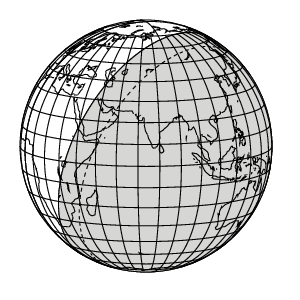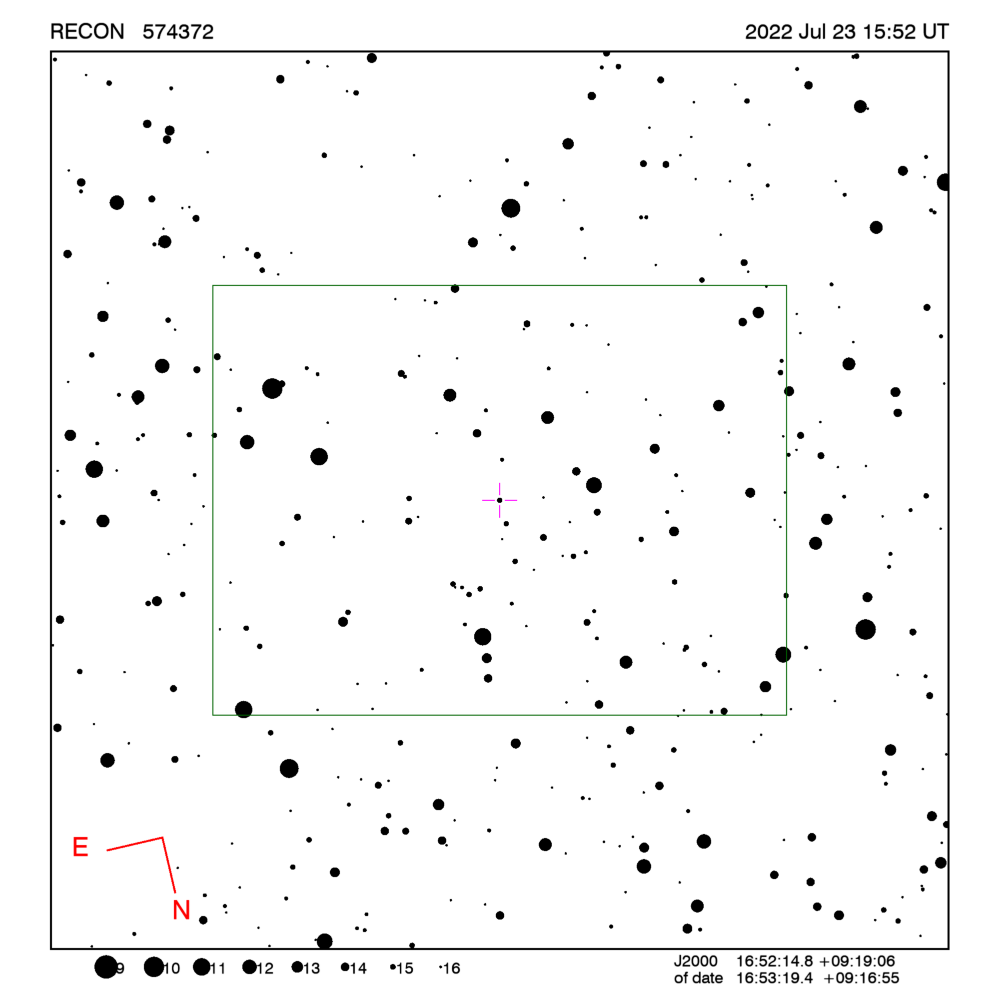RECON: TNO occultation with 574372
Event between (574372) 10JO179 and star GA0980:04554347
with event index number of 2518168
Geocentric closest approach at 2022/07/23 15:52:05 UTC
J2000 position of star is 16:52:14.8 +09:19:06
Equinox of date position of star is 16:53:17.2 +09:17:00
Stellar brightness G=15.6,
use SENSEUP=128 with the MallinCam and and exposure
time of 2 seconds with the QHY174 camera.
Star is 147 degrees from the moon.
Moon is 22% illuminated.
TNO apparent brightness V=21.8
 TNO is 60.0 AU from the Sun
and 59.4 AU from the Earth.
TNO is 60.0 AU from the Sun
and 59.4 AU from the Earth.
The TNO is moving 19.3
km/sec on the sky relative to the star, or,
1.6 arcsec/hr.
The 1-sigma error in the time of the event is 117 seconds.
The 1-sigma cross-track error in the shadow position is
2261 km.
The TNO has an absolute magnitude Hv=3.9
Diameter=986.3 km assuming a 5% albedo -- 51.1 sec chord
Diameter=402.7 km assuming a 30% albedo -- 20.9 sec chord
Dynamical classification is SCATNEAR
Star training set for 574372, (2022/07/23 15:52UT)
Object RA Dec mag sep mel
Vega 18:37:42.2 +38:48:21 0.0 37.65 110
Rasalhague 17:35:59.0 +12:32:43 2.1 10.97 140
25Iot Oph 16:55:04.6 +10:07:47 4.4 0.95 146
PPM 163194 16:52:12.0 +09:22:00 7.1 0.29 147
574372 16:53:19.4 +09:16:55 15.6 147
Positions are for equinox of date

Azimuth is measured in degrees eastward from north.
North is at an azimuth of 0, due East is at an azimuth
of 90 degrees, due South is 180, and due West is 270.
Do not use the listing below for the RECON CPC 1100 telescopes.
This is provided for other non-team facilities.
Star training set for 574372, (2022/07/23 15:52UT)
Object RA Dec mag sep mel
Vega 18:36:56.7 +38:47:07 0.0 37.65 110
Rasalhague 17:34:56.3 +12:33:31 2.1 10.97 140
25Iot Oph 16:54:00.4 +10:09:54 4.4 0.95 146
PPM 163194 16:51:07.4 +09:24:13 7.1 0.29 147
574372 16:52:14.8 +09:19:06 15.6 147
Positions are for J2000
Event circumstances last updated at 2021/10/13 01:37:53 UT
Marc W. Buie,
Southwest Research Institute
RECON
 TNO is 60.0 AU from the Sun
and 59.4 AU from the Earth.
TNO is 60.0 AU from the Sun
and 59.4 AU from the Earth.
